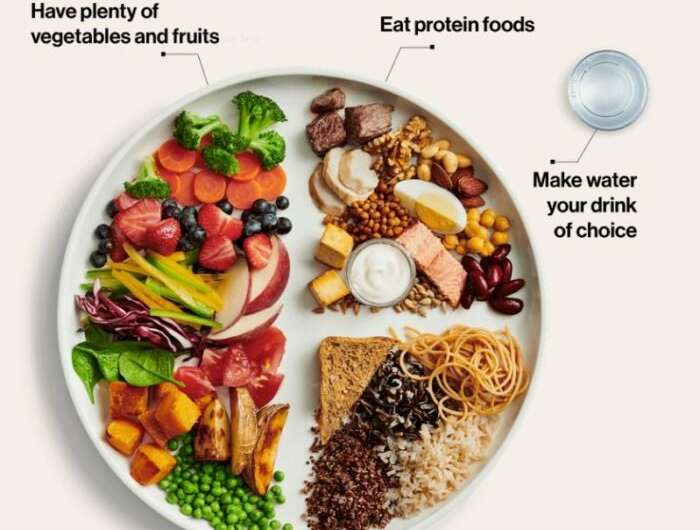New food guide rightly eschews serving sizes, says expert

The evolution of Canada's Food Guide to a plate full of three food categories – plus a glass of water – represents a positive step towards healthy, 'flexetarian' eating, says a leading Western expert on diet and nutrition.
The new guide, released this week, shows vegetables and fruit occupying half a plate, with protein foods and whole-grain foods each taking up one-quarter of the dish. This iteration is a positive step in good nutrition, explained dietician Leonard Piché, Professor Emeritus in the School of Food and Nutritional Science at Brescia University College.
"They're trying to move towards (cultivating) an eating pattern rather than trying to tell you about serving sizes, how much of this you should have and how much of that," said Piché, co-author of the widely used textbook Understanding Nutrition. "It's going to nudge more people to eat vegetables and fruits and more whole grains than they were before, maybe relying less on animal protein sources and going more towards seeds and nuts and beans as protein sources."
Piché contributed his advice to federal consultations about the revised guideline, and agrees with its emphasis on fruits and vegetables and de-emphasis on fat and saturated fats. Previous versions included a pyramid-style guide, with bread and grains as the base and a small amount of fats and sweets at the peak, and a sideways rainbow with similar suggestions.
Introduced during wartime as Official Food Rules in 1942, the guide took into account wartime rationing and malnutrition as it urged people to consume daily portions of six essential food groups: milk, fruit, vegetables, cereals and breads, 'meat, fish, etc.,' and eggs. The name was changed to Canada's Food Guide to Healthy Eating in 1992.
The newest version is different in two significant ways: no more food groups, only food categories; and recommended serving sizes and amounts have been replaced with proportions. It recommends eating a variety of healthy foods each day. More produce. Less protein, with protein alternatives to meat.
So if you're used to steak-and-potatoes with a side of milk, you might be disappointed.
Likewise, if you were hoping to see all-vegetarian recommendations, you won't find them here.
"It's more of what we would call a 'flexetarian diet' than it was before, rather than proscribed amounts of this, that and the other thing and this number of servings per day. This one is more flexible. It gives individuals the opportunity to choose the kinds of things they like, and maybe explore things they haven't eaten before and try them out as well," he said.
The online comes with recipes and short explanatory text, plus brief videos.
Some have critiqued the guide as condescending – it advises people to 'enjoy your food' and 'be mindful of your eating habits' and 'read labels.' But Piché said these are helpful reminders that were also part of the previous version: "People just didn't read them."
He looks forward to seeing more detailed explanations, and upcoming front-of-package labelling indicating a product's sodium content. Cooking at home rather than eating processed food or in a restaurant helps people take more control of their intake of fats, salts and sugar, he said.
Ultimately, he said, it's not about dictating what people should eat as it is about good nutrition and diet. "If they actually adopted the eating style that Health Canada is recommending, it is going to help people maintain their health and actually become healthier."


















